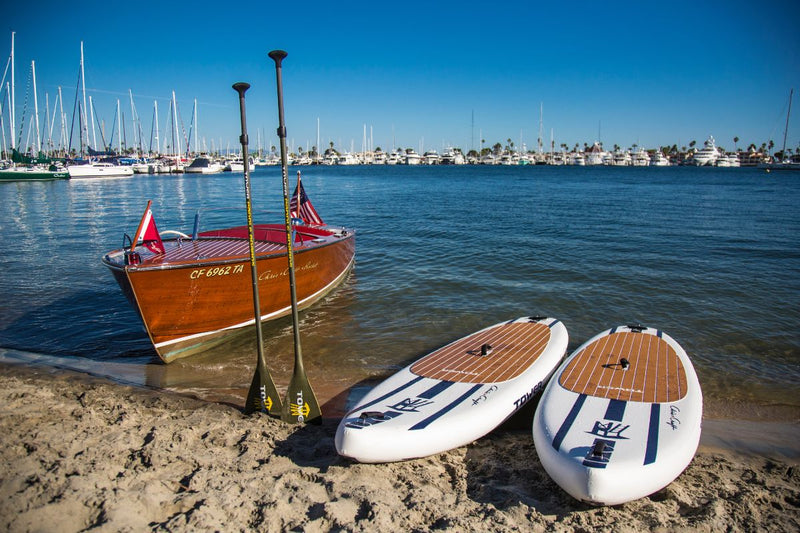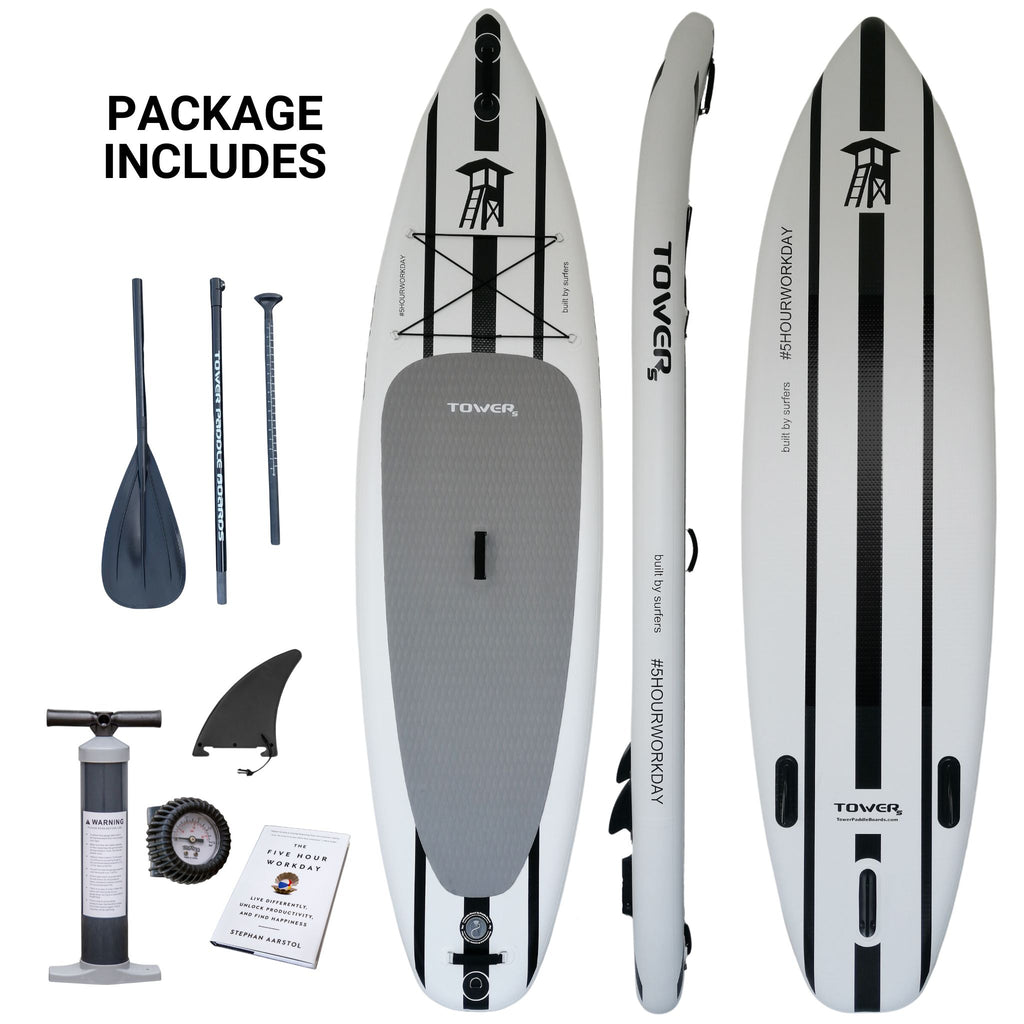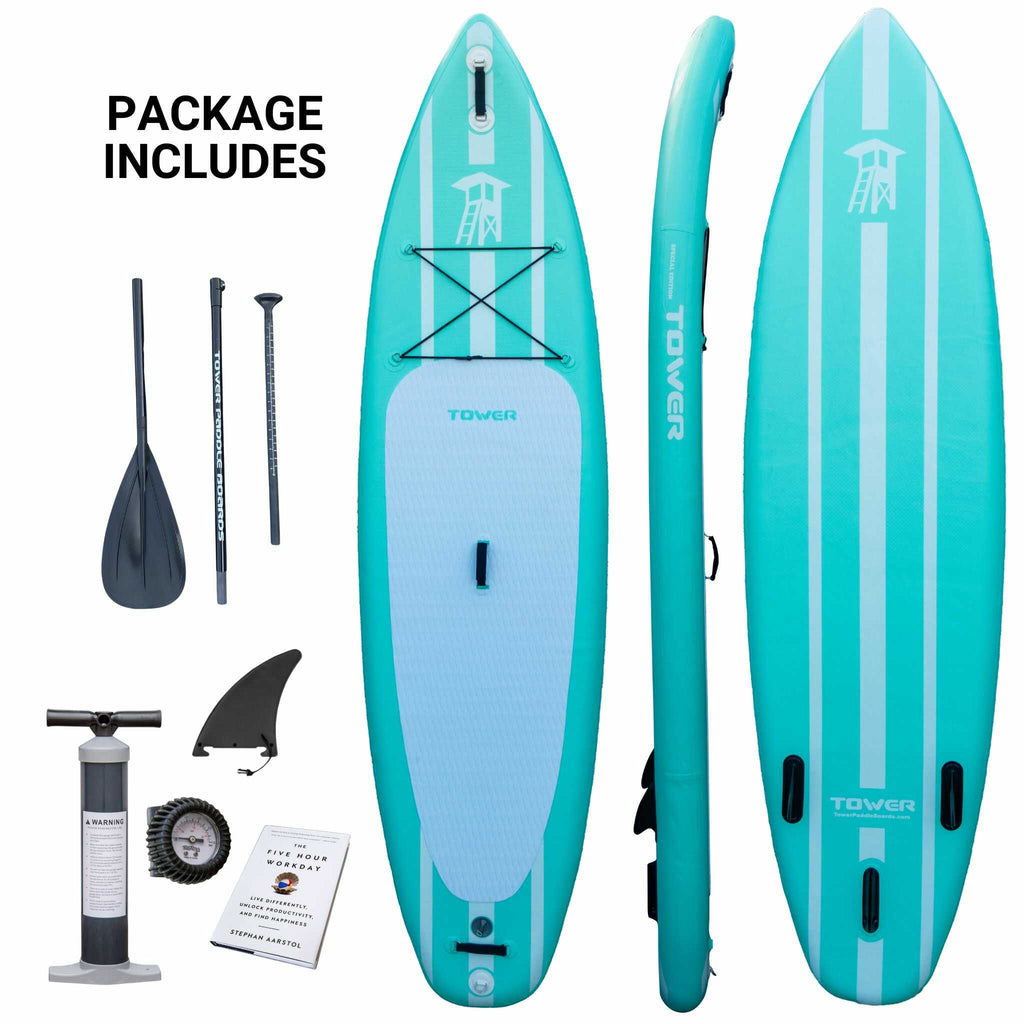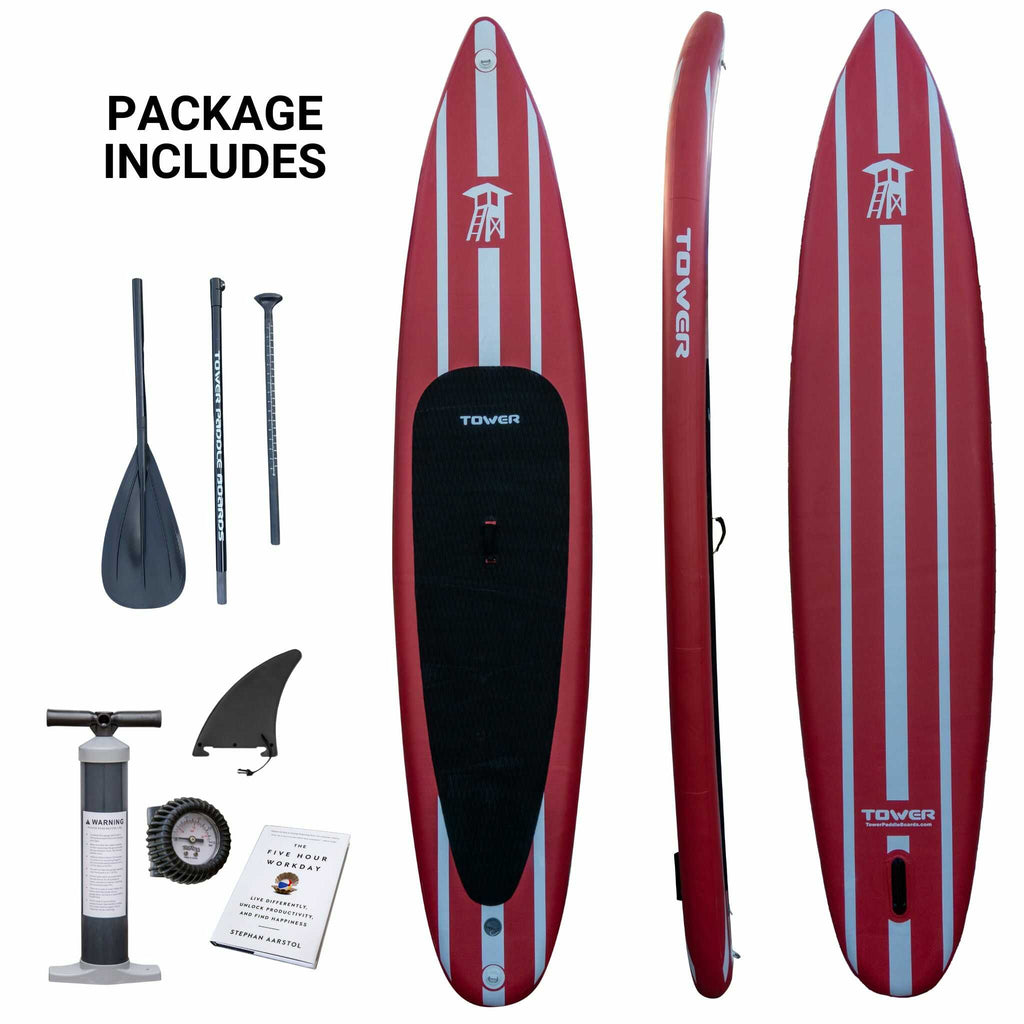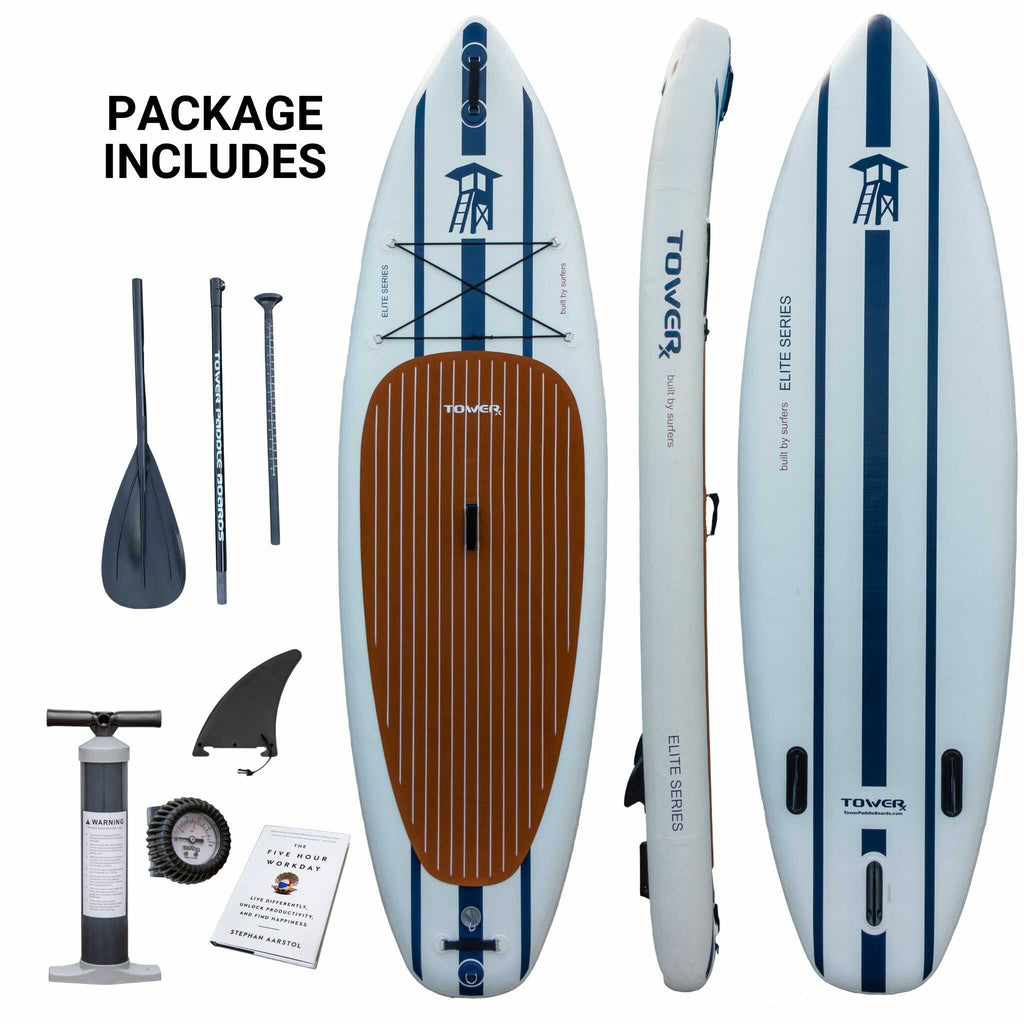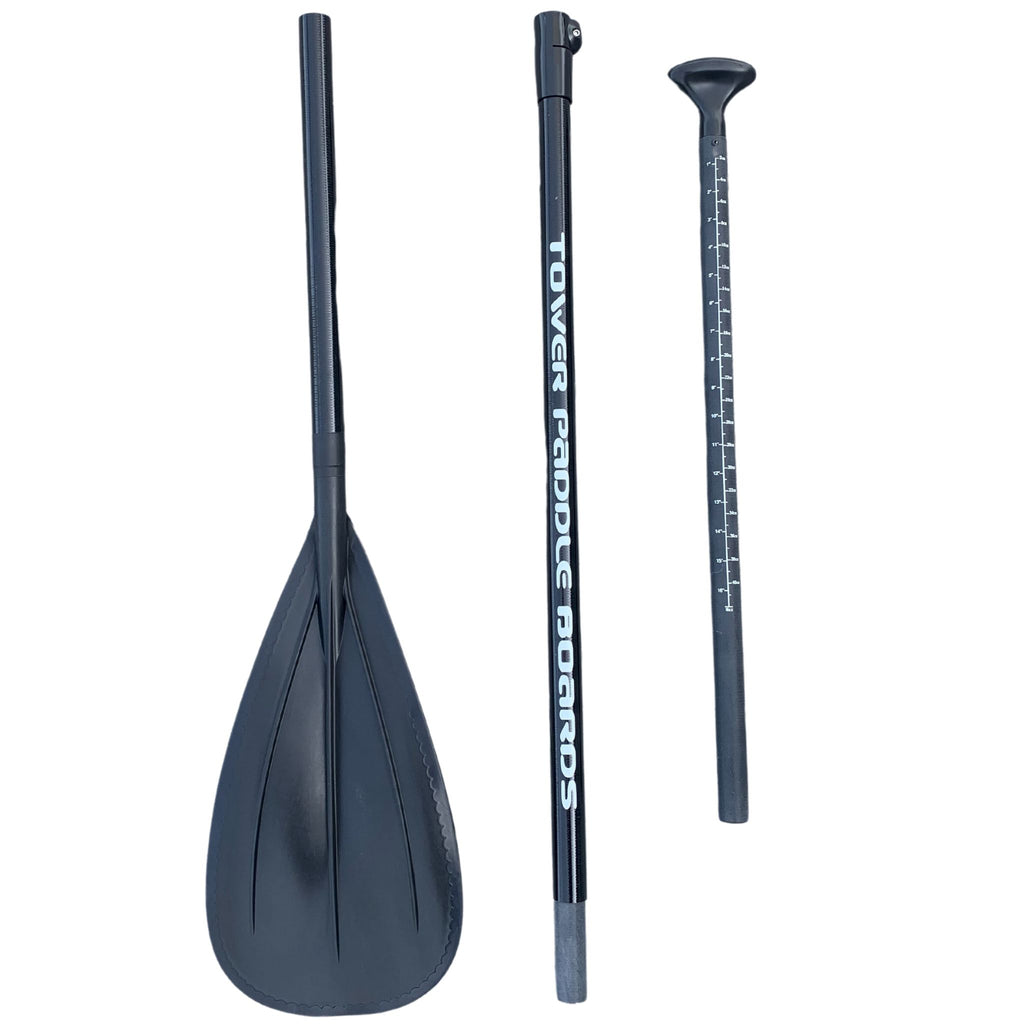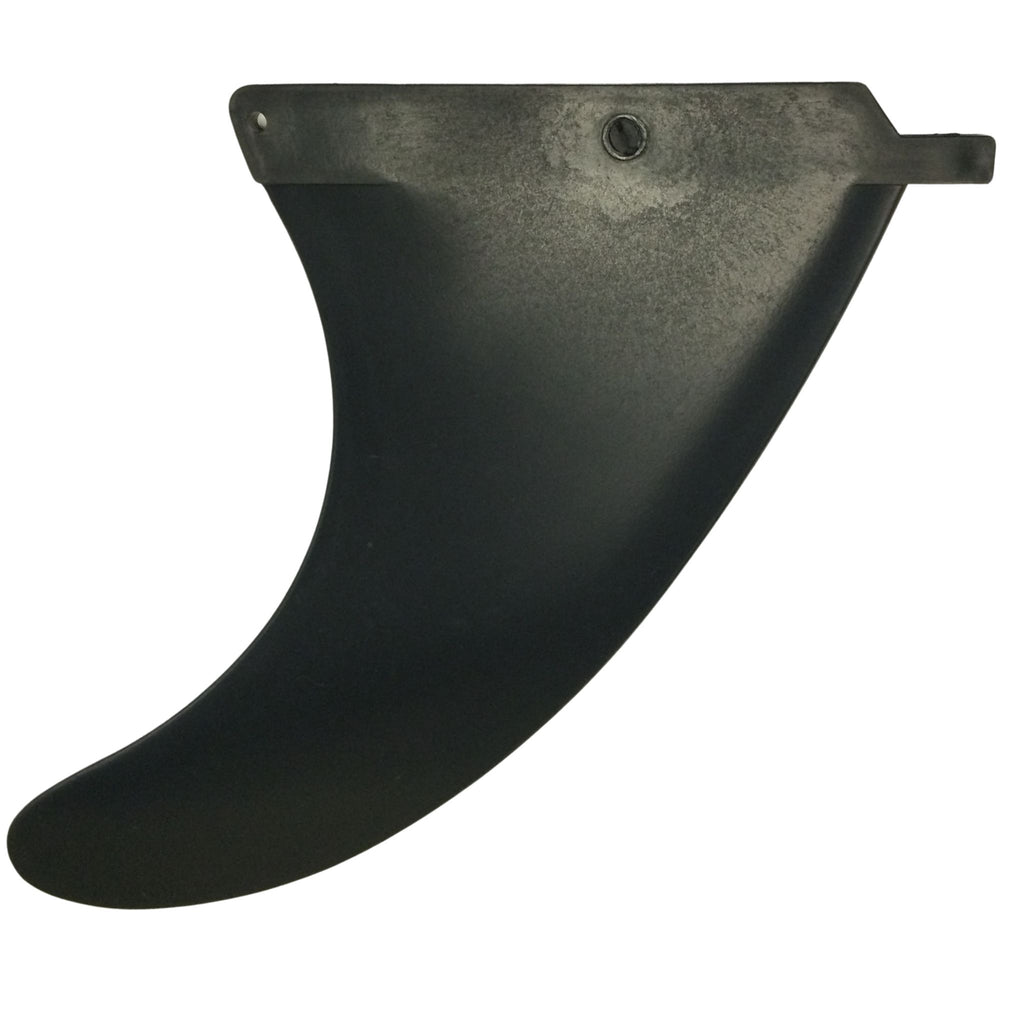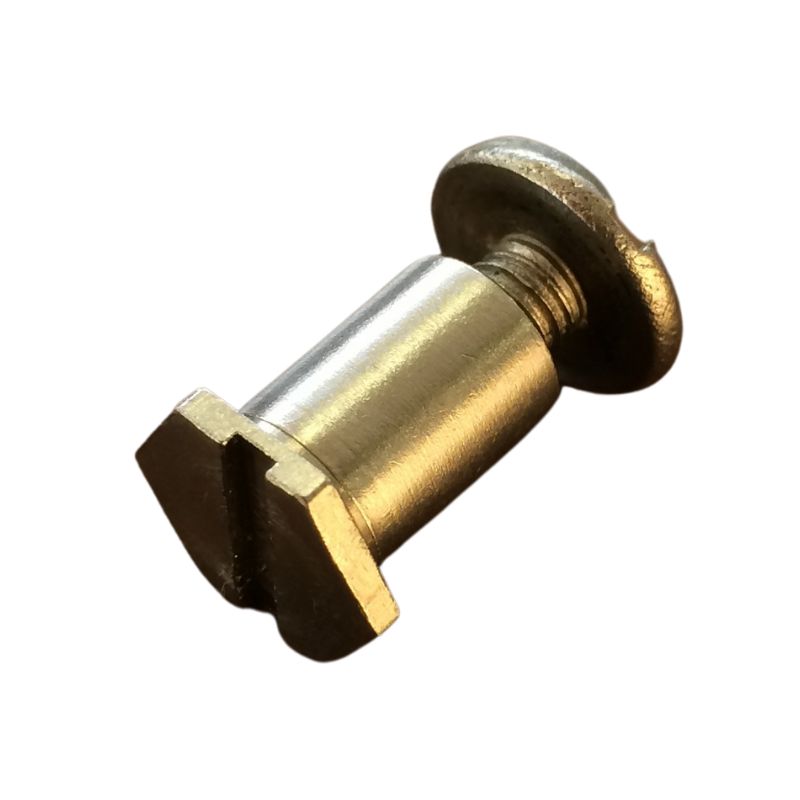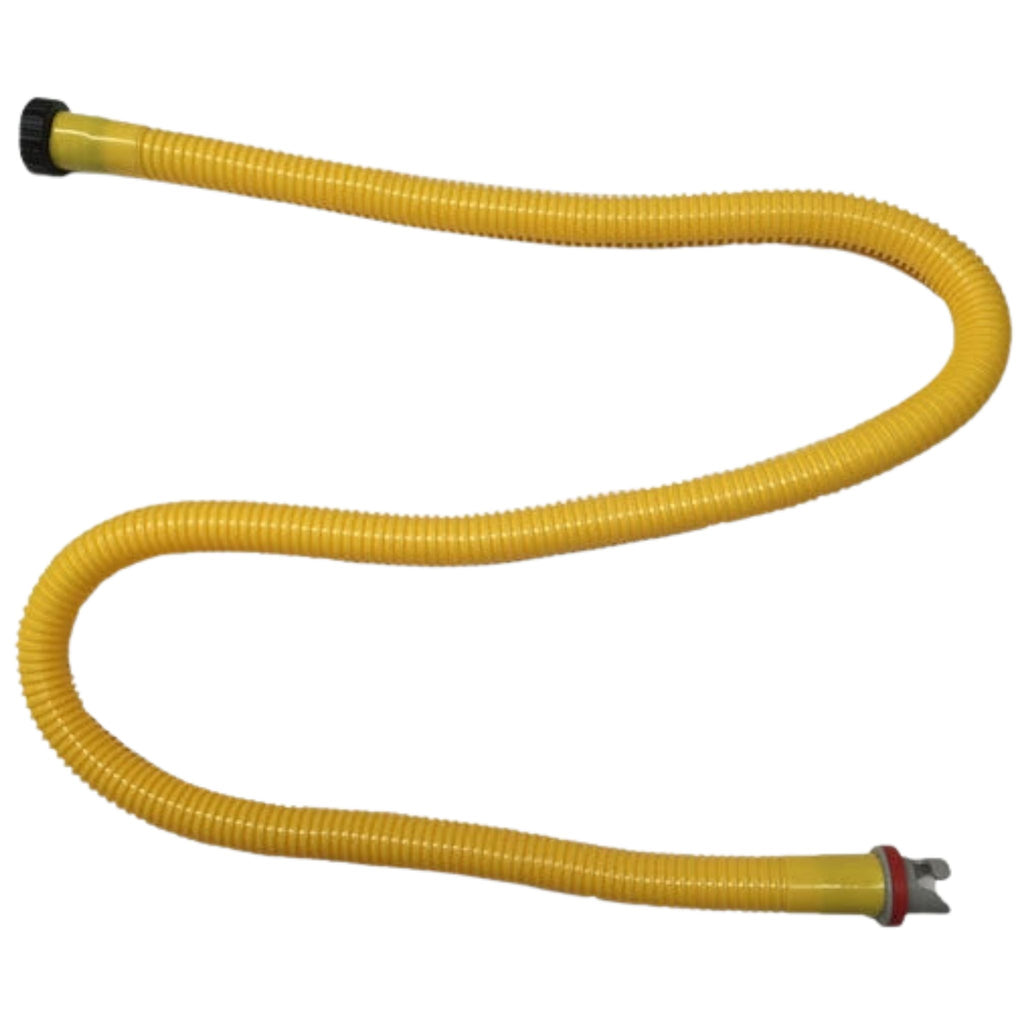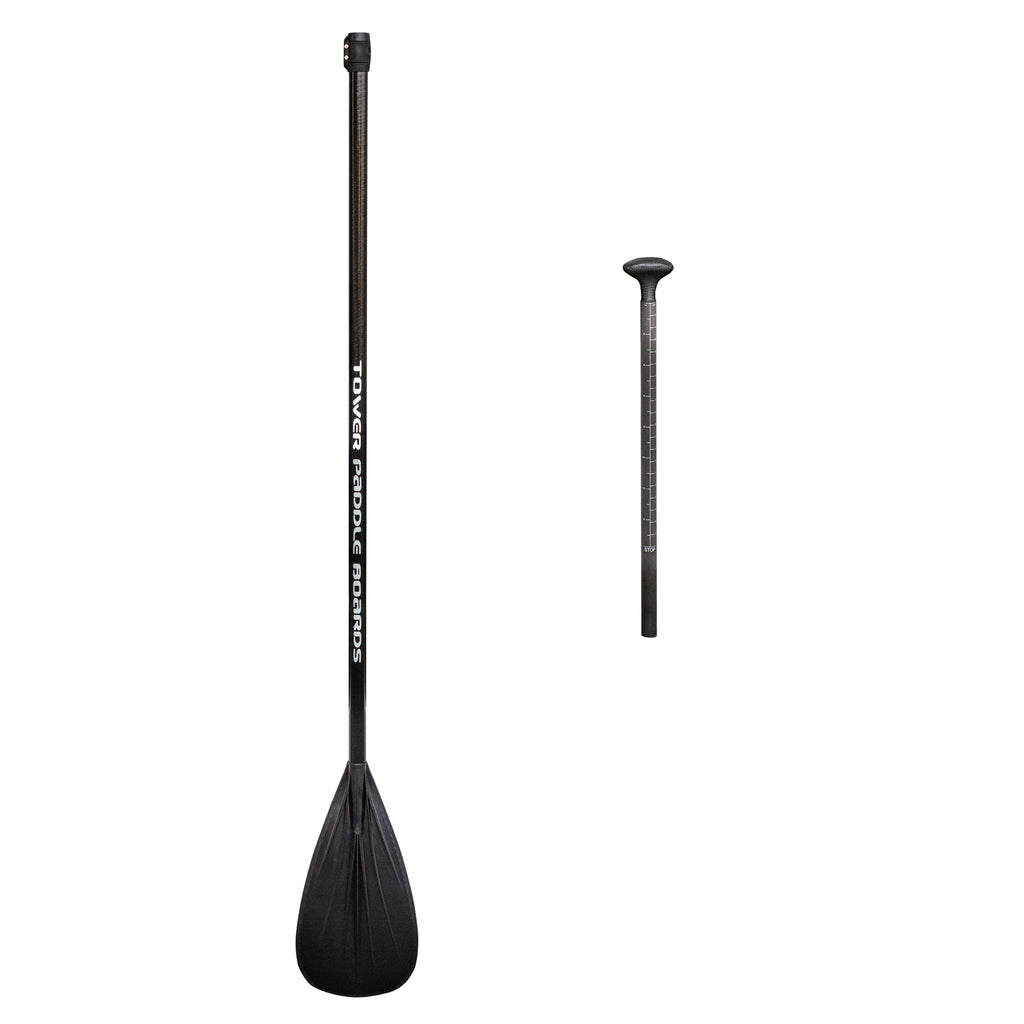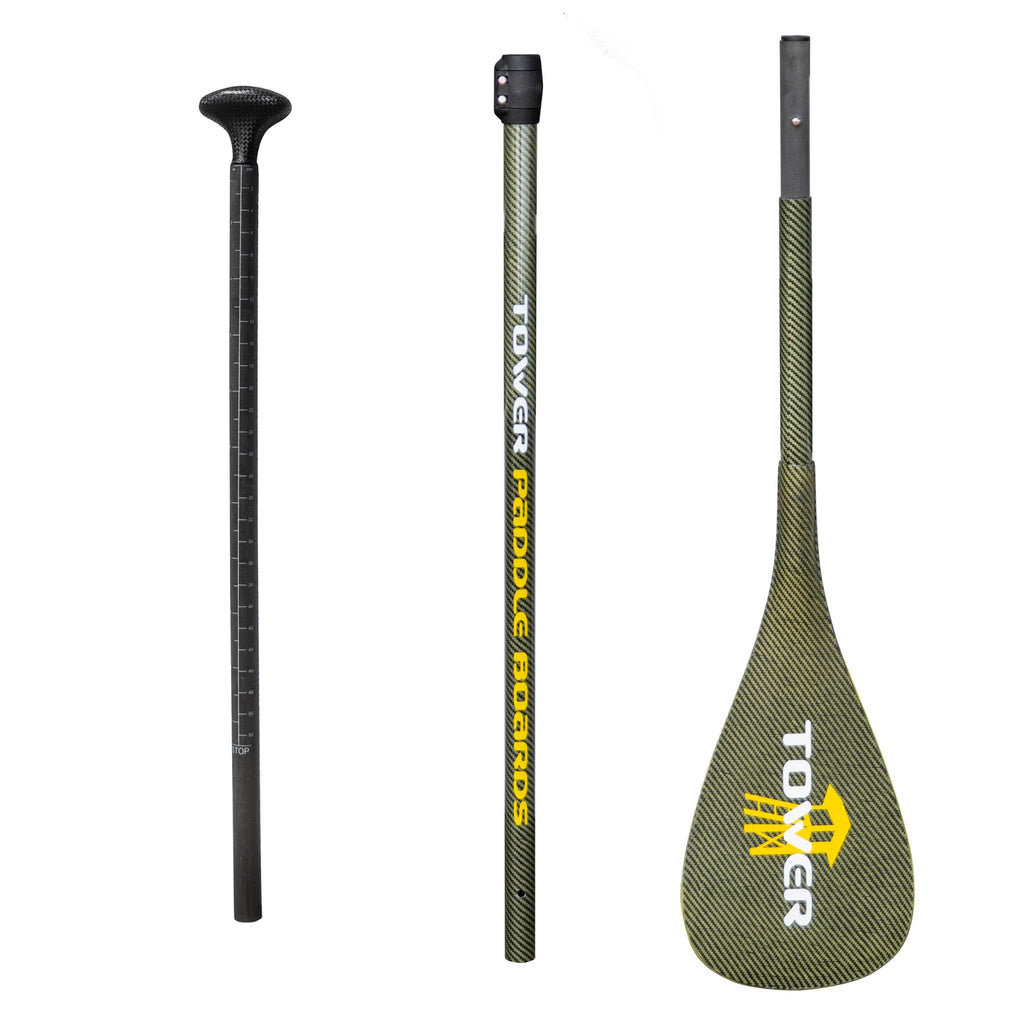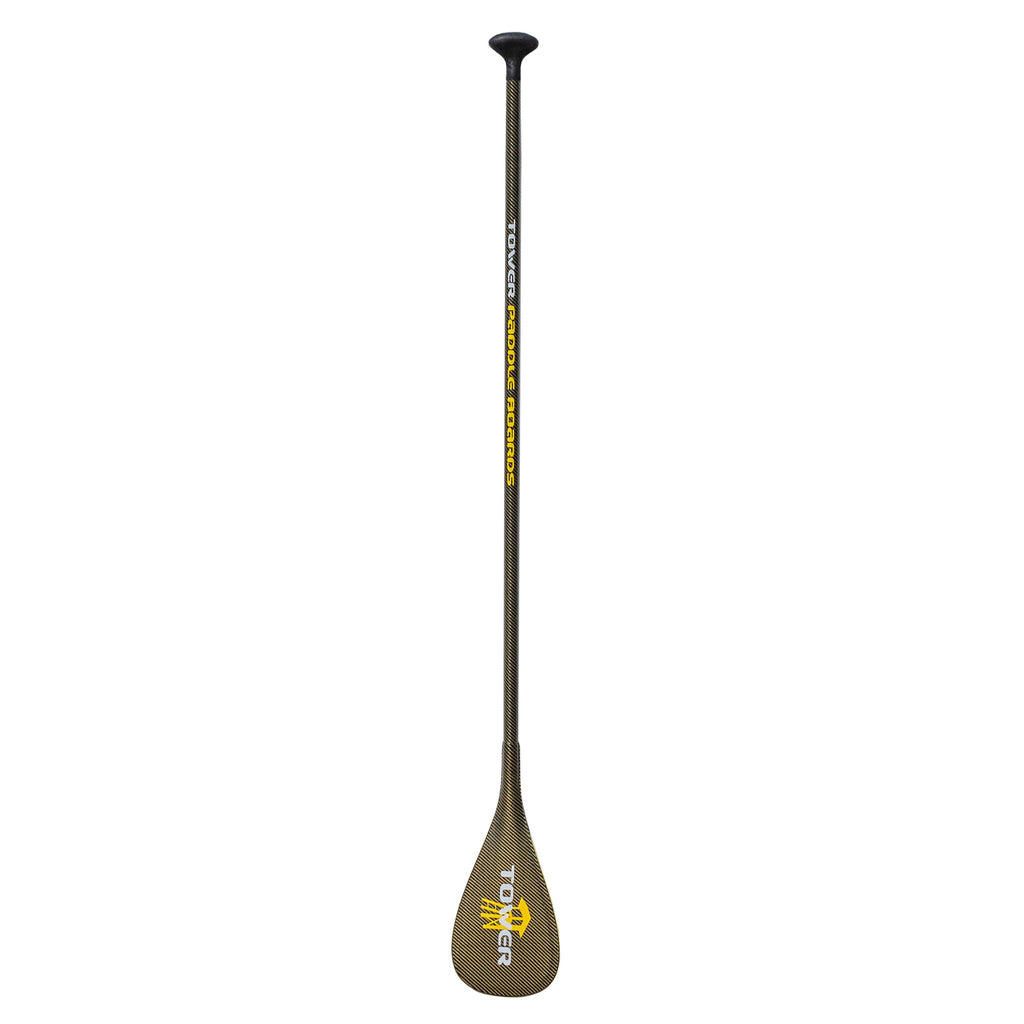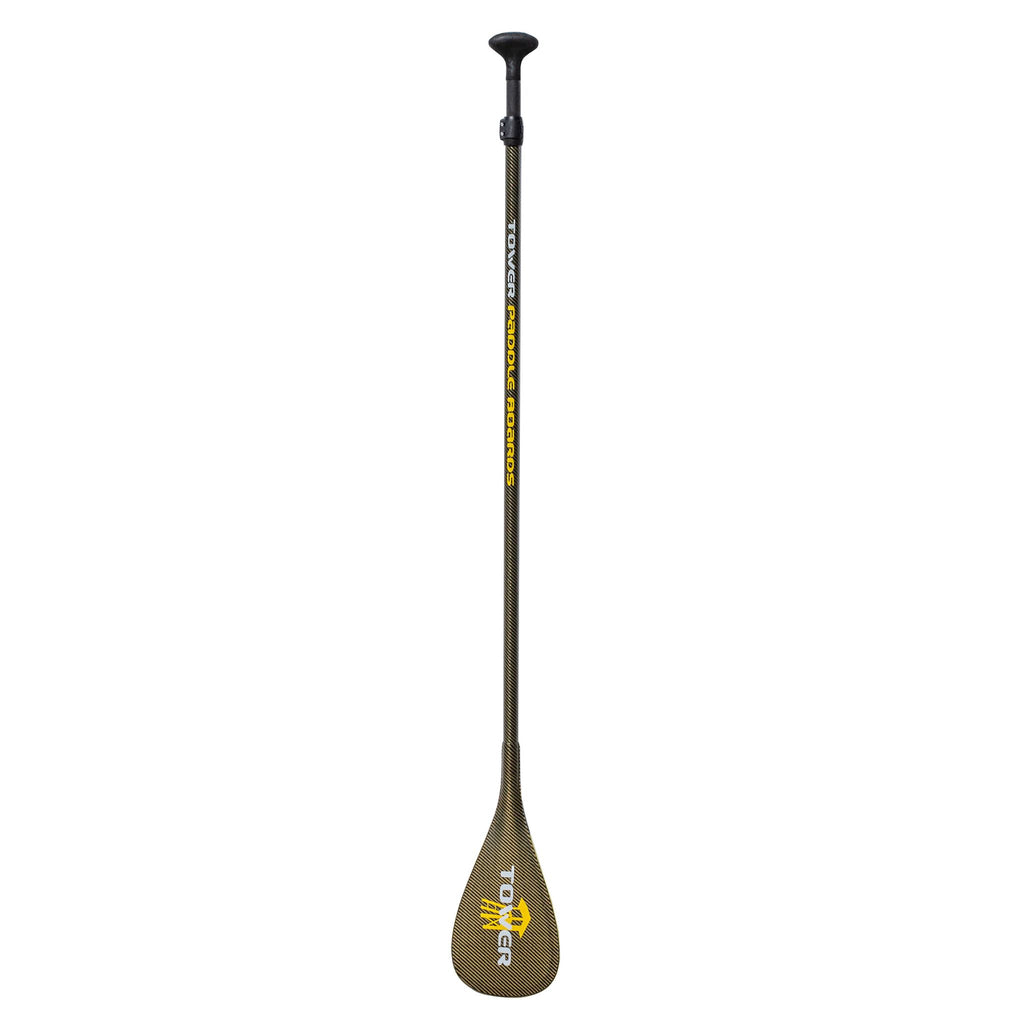The popularity of stand-up paddle boarding exploded in 2005 and has been growing ever since. Its expansion into the mainstream can be put down to its gentle learning curve and variety of uses to suit any interest, from recreational SUP paddling to SUP surfing to getting a killer cardio workout. On top of that, using a SUP is just a lot of fun and a good excuse to get out on the water!
People tend to get stuck when wondering how to select a stand-up paddle board. Choosing the right paddle board all comes down to the user, your interests, and what you want to use the SUP for. A helpful place to start is by taking our convenient Paddle Board Finder Quiz.
When researching stand-up paddle boards, it’s easy to be overwhelmed by all of the information about what to look for in a paddle board that exists online, so whether you’re a beginner or an experienced paddle boarder, we hope this guide will help. We’ve gathered all of the things you need to know about how to choose an inflatable paddle board so you can make an informed decision that you won’t regret!

SUP Board Types
- All-Around Paddle Boards
- SUP Surfing Boards
- Racing Paddle Boards
- Touring Paddle Boards
- SUP Fishing Boards
- SUP Yoga
What Size Paddle Board Do I Need?
Inflatable vs. Epoxy
Paddle Board Prices
SUP Companies
Final Thoughts
SUP Types
SUP boards can generally be broken down into six broad categories based on how you plan to use them, and it’s good to know what differentiates each of them to help you choose what’s right for you.
All-Around Paddle Boards
This is the most common style of SUP and could be considered a blend of all types of paddle boards. They are wide enough to provide stability, they are longer than surf SUPs to allow for easy gliding and tracking (holding your course), and they have a gentle rocker (curve) so they can perform in the surf, too. As the name suggests, all-around SUPs can work well in all kinds of conditions, so they’re among the best paddle boards for beginners. For a more detailed look, check out our more extensive all-around paddle board primer, or shop our selection of all-around stand-up paddle boards.

SUP Surfing Boards
Surfing SUPs have a similar shape to a traditional surfboard but have added width and thickness to provide extra buoyancy. Surf SUPs are geared more toward intermediate and advanced paddlers, as they are less stable than other styles. The reduced length makes them tougher to paddle and keep in a straight line than longer paddle boards. However, the shorter design and increased rocker increases their maneuverability for wave-riding. For a more detailed look at this style, check out our more extensive SUP surfing primer or shop our SUP surfing boards.
SUP Racing Boards
SUP racing boards are designed specifically for speed and tracking over flat water or open ocean. They are typically the longest kind of SUP available and have a much narrower outline, making them ideal for experienced riders and racers. The learning curve on this style of board can be steep for absolute beginners due to the reduced width, but once you have a feel for it, these will help you go places fast! For a more detailed look, check out our more extensive racing paddle boards primer or take a look at our iRace racing SUP board.
SUP Touring Boards
Also designed for flat water, touring SUPs are similar to racing SUPs in terms of length but offer more width, which makes them more accessible to the more inexperienced paddler. If you want a slightly more forgiving board for a long-distance paddle workout or a day-long paddle with some gear, these would be your best option. SUP touring boards are designed to glide for days and can even take a passenger, too! For a more detailed look, check out our more extensive touring paddle boards primer or see our touring SUP offerings.

SUP Fishing
SUP fishing boards are designed to provide stability and to keep you high off of the water. If fishing is your primary use for your SUP, then these can be a great option for you, although an all-around paddle board or a touring SUP can work just as well as many boards specifically made for fishing and will hold up better in a wider variety of conditions. For a more detailed look, check out our more extensive fishing paddle boards primer.
SUP Yoga
Paddle board yoga has been exploding in recent years! The newest addition to the SUP family is designed for flat, calm water to provide great stability. Where most other paddle board deck pads finish just beyond the midpoint, yoga SUP deck pads can extend almost the full length of the board to give you plenty of room to stretch all the way out. Width is important for stability on these boards; an all-around board can do the job here as well. For a more detailed look, check out our paddle board yoga primer or shop our yoga paddle boards online.
What Size Paddle Board Do I Need?
The size and style of paddle board you need will depend on the size of your body and what you plan to do with your board. There are a lot of variations from one paddle board to the next, and there are many varieties of paddle board uses. Beyond that, there are two completely different construction types that affect all of this: inflatable SUPs and hard (epoxy) SUPs. As such, the shape and size of SUP boards is all over the map.
SUP Volume and Weight Capacity
SUP volume is measured in liters and indicates how buoyant a board will be and what its weight capacity is: the higher the volume, the more weight the SUP board will be able to support. This is an important detail and shouldn’t be overlooked, particularly when purchasing a surf SUP. If you and your gear weigh over the weight capacity, the board will ride low in the water and will be inefficient to paddle. While volume is important to think about, you should also think about how that volume is spread throughout the SUP board (by length, width, or thickness) and your paddling needs.

SUP Length
Stand-up paddle boards generally range from around 7 to 14 inches depending on the style. The length of a SUP plays a large role in determining the maneuverability, speed, and tracking ability of the board. Volume added through additional SUP length will help with stability but will mainly contribute to speed and tracking. When you’re trying to decide, “What size paddle board do I need?” it’s a good idea to consider how you will transport and where you will store your board.
General Hard Board Size Guide
- Under 10 feet is great for surfing, kids, and lighter riders.
- Between 10 and 12 feet is ideal for all-around use, yoga, and fishing.
- Over 12 feet is a length designed for speed, gliding, and long-distance paddling.
Note that if you get an inflatable paddle board, which will typically be 6 inches thick, the thickness is uniform across the entire length. This is in contrast to hard SUPs, which are thinner on the tail and nose and only get to about 4-5 inches thick in the center. As a result, a 10-foot inflatable paddle board could have significantly more volume than a 14-foot hard board.
SUP Width
SUP board width is another determinant of volume and how a board will handle, and there are three factors to consider:
- What kind of paddling you will be doing: Whether you’re going to be doing long-distance touring, surfing, or yoga, you’ll need to consider your main activity in your buying decision. Extra width can slow a SUP board down, which is not ideal for long distances but will provide great stability if you’re a SUP yoga fanatic.
- Your body type: Narrower SUP boards suit smaller (and/or shorter) riders and vice versa. It can be easier to find your balance on a wide board if you’re a beginner, but if you’re a smaller rider, you may have to reach awkwardly over the rails to complete a paddle stroke if your board is too wide.
- Ability level: More experienced paddlers may be more comfortable on a narrower board than newbies. Extra width can make a beginner feel a lot more secure on the board when starting out and help flatten that learning curve.
Stand-up paddle boards range from about 28 to 33 inches in width, so if you have chosen a board of a certain length that will suit you, you can then select a board with an appropriate width that will provide you with the volume you need.
SUP Thickness
The final factor in board volume is thickness. Remember that the more volume a board has, the more weight it can support, so if you plan on riding tandem or bringing a dog with you, you may want to opt for a slightly thicker board to accommodate this.
Inflatable vs. Epoxy Paddle Boards
After you have made your decision on what type of SUP you want (surfing, yoga, etc.) and the dimensions, the next decision is whether you want an inflatable or solid board. To make your decision a little easier, you can base it upon three factors.

SUP Performance
A hard SUP board (epoxy, carbon, or fiberglass) will outperform an inflatable on the water in terms of speed and maneuverability, so if you are looking for a high-performance board, a solid board (fiberglass or carbon) will be your best bet.
Inflatable SUPs are the best paddle boards for beginners because hard boards are easily damaged when knocked off rocks, and for a first board, inflatables are usually cheaper to purchase. ISUPs range from 4 to 8 inches thick: The best stand-up paddle board for beginners will be 6 or 8 inches thick, as thinner boards are not as rigid and can flex a lot in the middle.
SUP Transportation
Hard SUPs can be tricky to transport depending on your vehicle, and they often require roof racks and straps. Inflatable paddle boards, on the other hand, can be deflated, rolled up, and put into the trunk of your vehicle or even checked onto a flight, so you can bring your board worldwide with you.
SUP Storage
This can be another point of frustration with hard boards, as they take up a lot of space, whereas an inflatable SUP can be rolled up and stored in a small space. It is not a good idea to store any kind of SUP outdoors, particularly in direct sunlight, as it can cause delamination. If you decide to go ahead with a hard board, in the interest of preserving it, keep it in a board bag to prevent scratches and dings.

SUP Pricing
A major factor in a lot of people’s decision to buy a paddle board is the price, particularly for beginners who aren’t sure if a SUP is for them. It’s important to do your research and compare both SUP boards and SUP companies. For a first SUP, you won’t need a super-expensive board, but you don’t want to go cheap and sacrifice quality. Direct-to-consumer companies are a good option when you want to get a new paddle board at a great value, as there is no retail or distributor markup factored into the price. Reading a comprehensive inflatable SUP buying guide and learning about what goes into a paddle board price is worthwhile before you commit to a SUP.
SUP Companies
When you’re deciding what stand-up paddle board to buy, learn about the company and the board and read reviews before you order. Referrals from past customers are going to have much more credibility than a company’s marketing efforts. Also, find out what kind of warranty they offer. At Tower Paddle Boards, we offer a two-year warranty on all of our inflatables.
Final Thoughts
When you buy a SUP for the first time, it can be tough. With so much information out there about all of the different products and companies, it can be hard to figure out what’s right for you, but if you can narrow down your decision first by activity and then by your needs from a board, you will be on the right path. At Tower Paddle Boards, we are a bunch of SUPers, surfers, and water-lovers, and that’s why we’ve created this stand-up paddle board buying guide: to help our customers get the right board for their lifestyle. Don’t hesitate to reach out and ask any questions you might have about how to buy a SUP board and which one to order. The more research you do about how to buy a paddle board, the better equipped you will be to choose the right paddle board for you!









